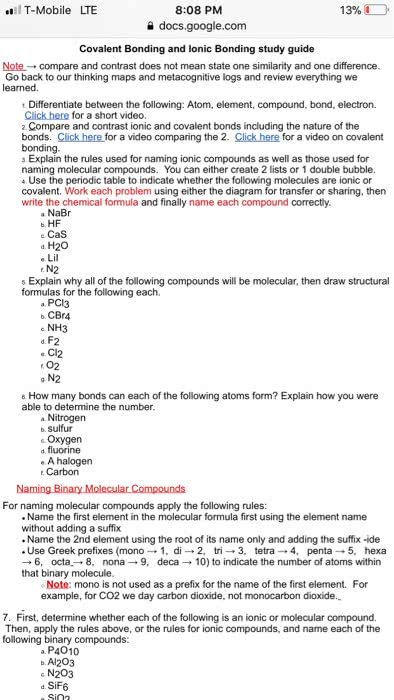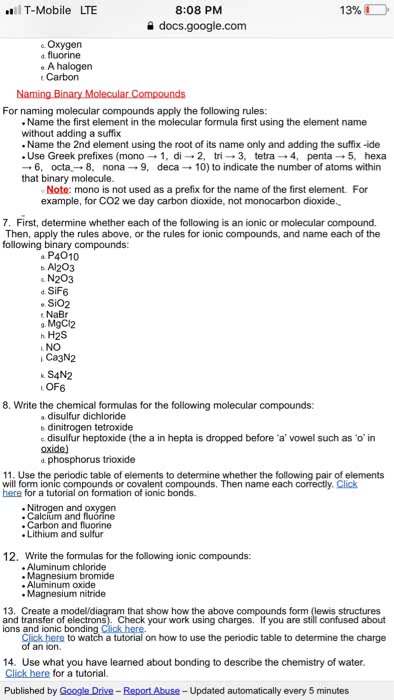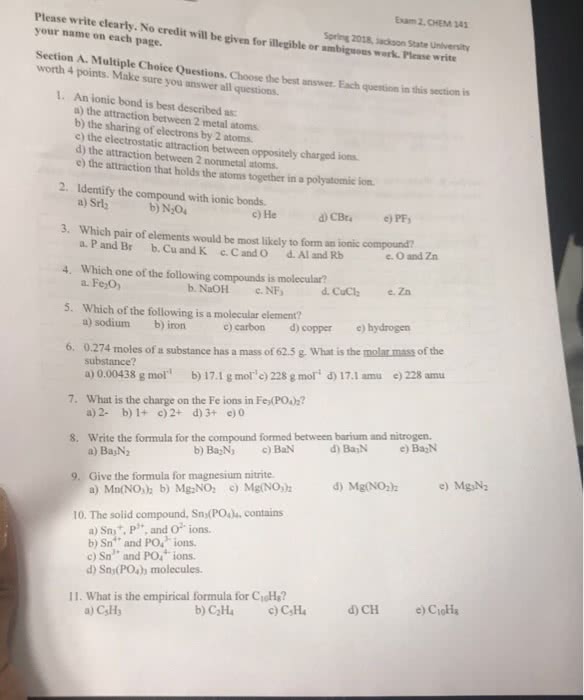CHEM 151 Lecture Notes - Lecture 3: Ketone, Viscosity, Metalloid
29 views6 pages
20 Aug 2016
School
Department
Course
Professor
Document Summary
Molecular vs ionic compounds: molecular all of the atoms that make up a chemical substance belong to nonmetal elements, ionic atoms that make up a chemical bond are metallic and nonmetallic. Molecular compounds: covalent bonds bond between two nonmetals. They are highly directional because the chance of finding bonding electrons outside the region between the two bonded atoms is low. They emerge from the dynamic interactions between the many molecules that form a substance. Intermolecular forces or imfs: these are dependent on the proximity of the molecules, the amount of protons and electrons and the attractive and repulsive forces between protons and electrons. Polarizeability the extent to which charge distribution in the atoms that make up a substance is affected by the presence of external charge. Dependent on the number of electrons and the space they occupy. Meaning that fluorine is not very polarizeable because it keeps its electrons close. Bond polarity the difference in charges of a bond.
Get access
Grade+20% off
$8 USD/m$10 USD/m
Billed $96 USD annually

Homework Help
Study Guides
Textbook Solutions
Class Notes
Textbook Notes
Booster Class
40 Verified Answers
Class+
$8 USD/m
Billed $96 USD annually

Homework Help
Study Guides
Textbook Solutions
Class Notes
Textbook Notes
Booster Class
30 Verified Answers
Related textbook solutions
Chemistry: Structure and Properties
2 Edition,
Tro
ISBN: 9780134293936
Basic Chemistry
5 Edition,
Timberlake
ISBN: 9780134138046
Principles of Chemistry Molecular Approach
4th Edition,
Tro
ISBN: 9780134112831
Principles of Chemistry Molecular Approach
3rd Edition, 2014
Tro
ISBN: 9780321971944
Chemistry: Structure and Properties
2nd Edition,
Tro
ISBN: 9780134293936
Chemistry: A Molecular Approach
3rd Edition,
Tro
ISBN: 9780321809247
Chemistry: A Molecular Approach
5th Edition,
Tro
ISBN: 9780134874371
Principles of Chemistry: A Molecular Approach
4th Edition,
Tro
ISBN: 9780134895741
Chemistry: The Central Science
14th Edition, 2017
Brown
ISBN: 9780134414232


